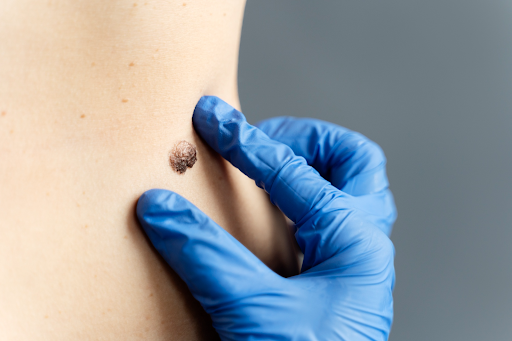
Are Lipomas Dangerous? Expert Insights into Diagnosis and Management
Finding a lump under the skin can be worrying, especially when its cause is unknown. In many cases, the lump turns out to be a lipoma, a soft and slow-growing mass of fatty tissue. Although most are harmless, people often ask whether these growths can ever become dangerous.
Understanding the difference between harmless and concerning signs is crucial for maintaining peace of mind and receiving timely treatment. Let’s explore what a lipoma is, how it develops, how it should be diagnosed, and the management options available to patients with this common condition.
What is a Lipoma?
It is a non-cancerous lump made up of fat cells that form beneath the skin. It usually feels soft, moves easily when touched, and grows slowly over time. These lumps can appear anywhere on the body but are most commonly found on the shoulders, back, neck, arms, or thighs. Lipomas can occur at any age, though they are more common in adults aged 40 to 60.
While their exact cause isn’t always clear, genetics often plays a role. If someone in your family has had a lipoma, you may be slightly more prone to developing one. Certain conditions, such as obesity or minor injuries to the area, may also contribute, though scientific evidence remains limited.
Are they Dangerous?
In most cases, a lipoma is benign and poses no threat to health. It rarely transforms into anything serious. However, not every lump under the skin is a lipoma. That is why a proper assessment by a qualified doctor is necessary.
Although lipomas themselves are not harmful, they can occasionally grow large enough to cause discomfort. In rare cases, they may press on nearby nerves, muscles, or blood vessels, leading to pain or restricted movement. If you notice sudden growth, pain, or a change in shape or colour, it’s wise to get the lump checked. Sometimes, what appears to be a lipoma may actually be another type of growth that requires different treatment. This is why early consultation is important. The goal isn’t to cause alarm but to ensure clarity through a professional diagnosis.
Common Signs and When to See a Doctor
Most lipomas are discovered accidentally. They are soft to the touch, painless, and located just below the skin. However, certain features make it essential to seek medical advice:
- Fast increase in size
- Pain or tenderness
- Firmness or change in texture
- Growth deep inside muscle tissue
- Interference with daily movement or comfort
A doctor can confirm whether the lump is indeed a lipoma or something else. Remember, self-diagnosis can be misleading. Only a clinical assessment can rule out other conditions and offer reassurance.
Diagnosis: How Doctors Confirm a Lipoma
Diagnosis usually starts with a physical examination. The doctor checks the lump’s texture, mobility, and size. Most of them can be confidently identified with this basic assessment.
If the lump is large, painful, or deep in the tissue, imaging tests such as ultrasound, MRI, or CT scan may be recommended. These help the doctor see the internal structure and confirm the nature of the lump.
Occasionally, a small tissue sample (biopsy) is taken for analysis. This step is primarily to rule out rare conditions that may mimic lipomas. Getting a proper diagnosis not only removes uncertainty but also helps decide if removal is necessary.
How Are Lipomas Managed?
The treatment depends on its size, symptoms, and location. There is no single approach that fits everyone, but management typically follows two main paths.
Observation
Many lipomas may not require treatment if they’re small, painless, and not causing discomfort. Regular observation is often all that’s needed. During routine check-ups, doctors may monitor the lump’s size to ensure it isn’t changing rapidly.
Surgical Removal
Surgical excision is considered when the lipoma causes pain, limits movement, or creates a noticeable cosmetic concern. It is also recommended when the diagnosis is uncertain.
The procedure involves making a small incision and completely removing the fatty tissue. It’s generally a minor surgery and patients recover quickly. Once removed completely, they rarely recur.
In selected cases, where the lump is soft and superficial, liposuction may be an alternative to surgery. However, the method chosen depends on the lump’s size, position, and the doctor’s judgement.
Living with a Lipoma: What to Expect
Living with a lipoma rarely affects daily life. Most people experience no pain or health impact. However, it’s natural to feel uncomfortable if the lump is visible or prominent. In such cases, surgical removal can help improve confidence and comfort.
After treatment, recovery is usually smooth. The area may feel slightly sore for a few days, but regular activity can resume soon after. Maintaining a healthy lifestyle, staying active, and having regular medical check-ups can support overall skin and tissue health.
While there is no guaranteed way to prevent lipomas, early detection and professional advice ensure that any unusual changes are managed appropriately.
When to Seek Medical Advice
Anyone who notices a lump, especially one that grows or becomes painful, should seek medical advice quickly. A quick assessment can rule out concerns and confirm if it’s a harmless lipoma. It’s always better to get a doctor’s opinion rather than delay or rely on assumptions. Awareness and early action make a significant difference in managing any health issue effectively.
Conclusion
A lipoma is generally a harmless and slow-growing fatty lump that rarely leads to serious health issues. Most of them don’t need treatment unless they become painful, large, or affect appearance. Knowing when to seek medical advice helps ensure timely care and peace of mind. Regular check-ups and proper diagnosis ensure that what appears to be a small lump remains nothing more than a small lump. By staying informed and proactive, individuals can manage lipomas confidently without unnecessary anxiety or delay.



